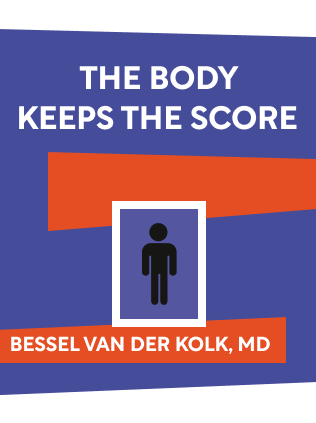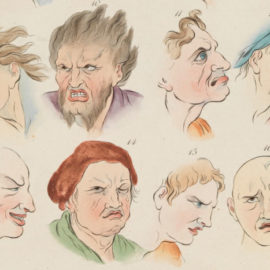

This article is an excerpt from the Shortform book guide to "The Body Keeps The Score" by Bessel van der Kolk. Shortform has the world's best summaries and analyses of books you should be reading.
Like this article? Sign up for a free trial here .
What is trauma dissociation? Why do people with PTSD experience trauma dissociation?
Trauma dissociation is when people with PTSD or trauma become detached from their physical sensations. The loss of physical feelings can make trauma survivors feel lost and out of control.
Read about trauma dissociation and why it happens.
Trauma Dissociation: When Traumatized People Disconnect From Their Physical Sensations
Recognizing the physical sensations in your body — as basic as cold or hunger — is at the core of your sense of self. How can you know what you enjoy, need, or want if you don’t understand how you feel on the most basic level? PTSD and dissociation can help explain this loss of sensation.
Before you develop language or consciousness, your physical awareness begins in the womb, feeling the motion of your mother’s movements and hearing the whooshing of the blood flowing through her arteries. As you get older, physical sensations continue to provide information about your internal condition and your environment. Effectively reading sensory cues is essential to staying safe and healthy.
Many trauma survivors suffer major disconnection from their bodies, which makes it impossible to feel fully alive, take care of their bodies and minds, and effectively engage with other people.
Some survivors lose feeling in whole areas of their bodies, and can’t even determine what kind of object they’re holding in their palm by touch alone. Some survivors of chronic childhood trauma are so disconnected from their bodies that they can’t even recognize themselves in the mirror. Trauma and dissociation can cause these symptoms.
Sensory Unawareness in the Brain: Trauma Dissociation
When researcher Ruth Lanius put trauma survivors through a brain scan and asked them to think about nothing — just focus on their breathing — her study revealed that their lack of sensory self-awareness was reflected in their brain activity. The survivors’ brains showed only a mild activation in the area that gives you your basic orientation in space.
By contrast, the control group of non-trauma sufferers had activation in the areas of the brain that give you the physical sense of where you are, register the physical sensations throughout your body, communicate your physical sensations to your emotional centers, integrate your sensory perceptions, and coordinate your thoughts and emotions. Together, all these brain functions create self-awareness and consciousness. Trauma and dissociation disrupts this process.
During a traumatic event, victims learn to cut off the connection between physical sensations, such as abuse, and emotional reactions, such as fear. The trouble is that this response continues long after the event is over, and inhibits survivors from experiencing physical sensations and their accompanying emotions — both positive and negative — in everyday life. Unable to register warmth, arousal, hunger, or pain, trauma survivors end up feeling numb. This is trauma dissociation.
Not Understanding Physical Sensations Leaves Trauma Survivors Feeling Out of Control
“Agency” is the feeling of being in control of your life — knowing where you are (literally and figuratively), that you’re in control of your actions, and that you can affect your circumstances.
Trauma dissociation sufferers’ tend to feel a lack of agency that stems from their disconnect from their physical sensations: If they can’t register what they’re feeling, then they can’t figure out why they’re feeling that way, and they can’t do anything about it. For example, if you can’t recognize that your body is tense, then you can’t use that clue to intuit that you’re feeling stressed, and you can’t do anything to manage that stress. By the same token, you can’t interpret or act on what you need to take care of yourself, and it’s nearly impossible to find a sense of purpose or direction in life.
This inability to identify emotions is called alexithymia; in Greek, this literally means having no words for feelings. Not only do people with alexithymia fail to recognize their own emotions, but they can’t read others’ emotions, either; researchers found that when they showed pictures of angry faces, people with alexithymia couldn’t figure out what the people in the pictures were feeling. It’s common in PTSD dissociation.
Trauma survivors also need to be able to trust their bodies to provide accurate information, which is practically impossible if their brains are wired to be hypervigilant and hyperreactive to perceived threats. Instead, survivors may try to reject and suppress physical sensations, ultimately leaving them feeling confused by and out of control of what’s going on inside themselves. This is PTSD and dissociation.
Suppressed need don’t simply go away — the body finds other ways of expressing them to demand your attention: Many trauma survivors develop other problems with trauma and dissociation including physical ailments (that have no physical cause), including migraines, neck and back pain, fibromyalgia, asthma, digestive issues, irritable bowel syndrome, and chronic fatigue.
Treatment Must Help Survivors Become Aware of Their Bodies
In order to regain control of their bodies and minds to finally move past trauma, sufferers must learn to read and respond to their physical sensations. They must first become aware of their sensations, then work on identifying them and learn to respond to what their bodies are telling them.
Effective treatments include mindfulness practices that increase survivors’ awareness of their bodies. These treatments aim to help trauma sufferers
- Tune into to the sensory perceptions that they learned to block during trauma
- Learn to embrace those sensations instead of suppressing them
- Gain a sense of completing the acts of self-preservation that they were immobilized from doing during their traumatic events
Trauma dissociation can happen to people who have experienced trauma, and can be a terrifying symptom.

———End of Preview———
Like what you just read? Read the rest of the world's best book summary and analysis of Bessel van der Kolk's "The Body Keeps The Score" at Shortform .
Here's what you'll find in our full The Body Keeps The Score summary :
- How your past trauma might change your brain and body
- What you can do to help your brain and body heal
- Why some trauma survivors can't recognize themselves in the mirror






